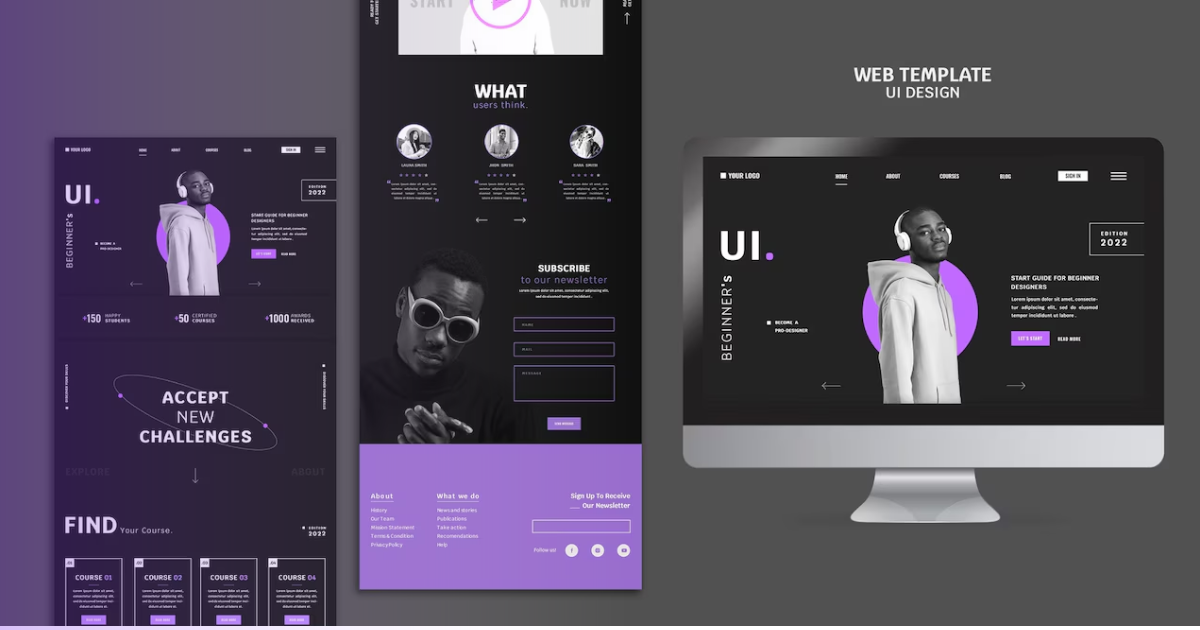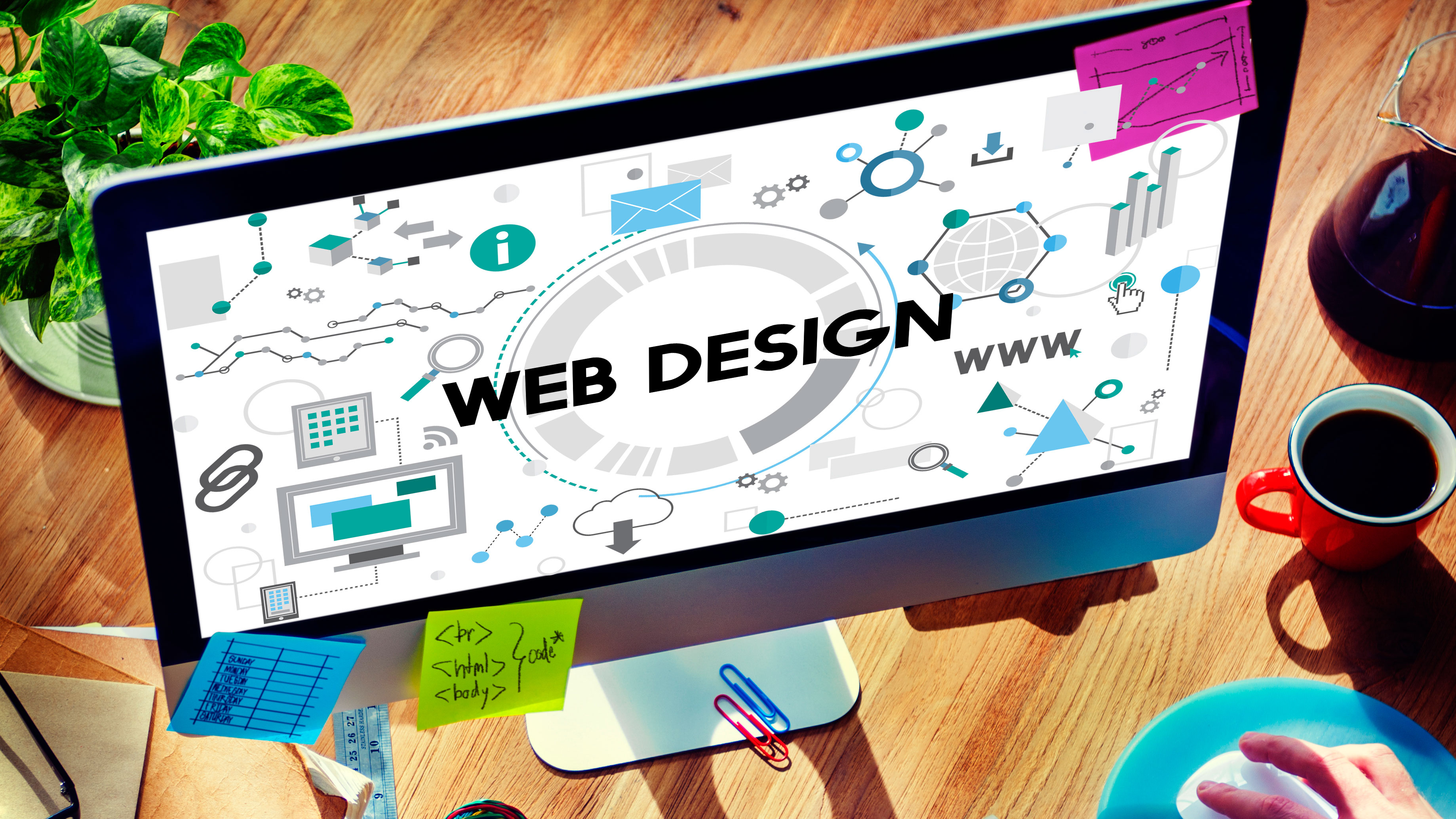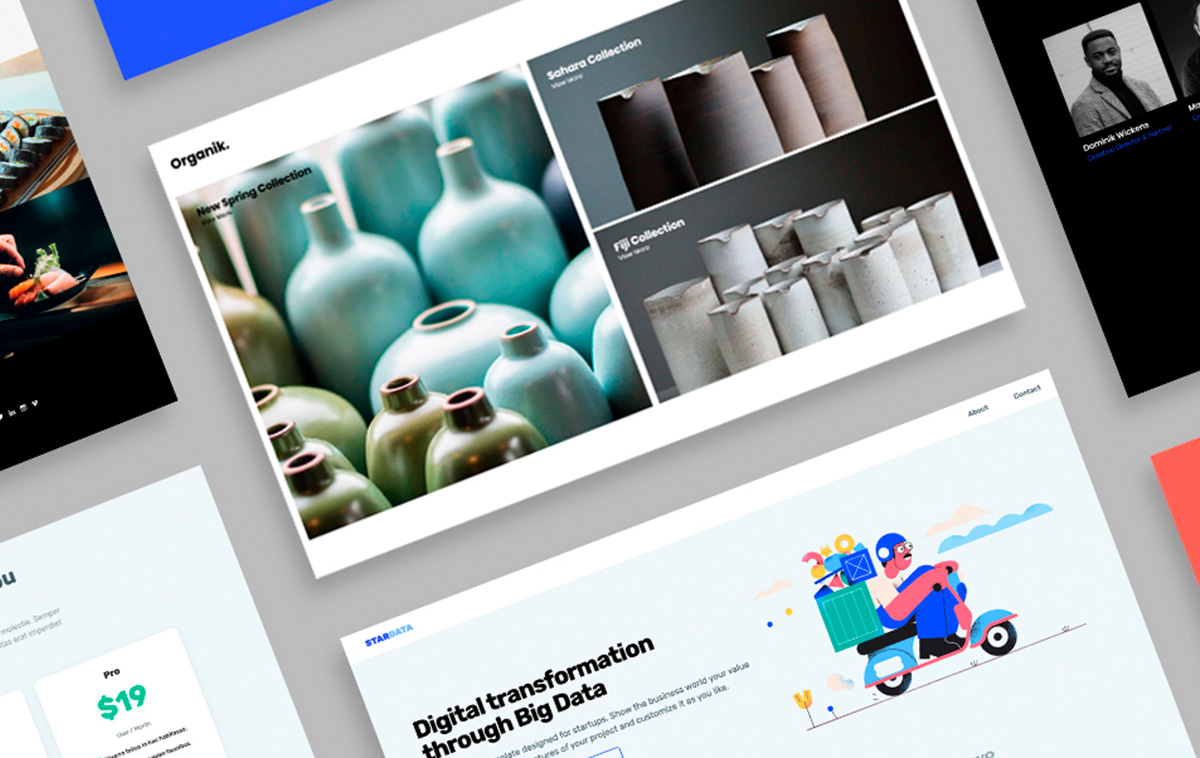Aligned Position Web Design: Comprehensive Web Design Solutions for Small and Large Businesses
Aligned Position Web Design: Comprehensive Web Design Solutions for Small and Large Businesses
Blog Article
The Most Effective Sorts Of Website Design to Enhance Individual Experience and Interaction
In the ever-evolving landscape of digital communication, the effectiveness of Web style substantially influences individual experience and involvement. Numerous style techniques, such as minimalist, receptive, and interactive formats, each deal distinct advantages that can cater to diverse individual requirements.
Minimalist Website Design
As digital landscapes become significantly cluttered, minimalist Web design has actually arised as a powerful technique to improving customer experience. This layout ideology prioritizes simplicity, concentrating on crucial components while getting rid of unnecessary diversions. By making use of adequate white space, straightforward navigating, and a minimal shade scheme, minimal design fosters quality and directs individual focus to crucial content.
The core principle of minimalist website design is to produce a smooth interaction for users. By reducing cognitive tons, users can swiftly realize information without feeling overwhelmed. This direct approach not only enhances functionality yet also motivates engagement, as site visitors are much more likely to explore a website that is aesthetically enticing and easy to browse.
In addition, minimalist design usually highlights typography and imagery, making use of these aspects purposefully to share messages efficiently. In essence, minimal Web design is not just a trend; it is a thoughtful methodology that acknowledges the value of user-centered style.
Receptive Web Layout
In today's varied electronic atmosphere, receptive Web design has actually become vital for developing a smooth customer experience throughout a plethora of devices. As users access websites on smartphones, desktop computers, laptops, and tablet computers, the capacity of a website to adjust its design and content to different screen sizes and resolutions is crucial.
Receptive Web design uses flexible grids, images, and CSS media queries to ensure that Web content exists optimally, no matter the gadget made use of. This approach not just improves the aesthetic allure of a site but also significantly improves functionality. Individuals are more probable to engage with a website that offers a constant experience, as it removes the disappointment of having to focus or scroll exceedingly.
Moreover, online search engine, consisting of Google, focus on mobile-friendly web sites in search positions. By taking on receptive style, services can boost their visibility and reach a more comprehensive audience. This technique also simplifies website maintenance, as a single variation of the website can satisfy all gadgets, reducing the need for several variations. In recap, responsive website design is an essential method that boosts customer experience, engagement, and total fulfillment.
Interactive Web Style
Responsive Web layout lays the foundation for enhancing individual experience, yet interactive Web style takes this an action even more by engaging individuals in a more dynamic way - Aligned Position Web Design. By incorporating elements such as computer animations, clickable models, and real-time comments, interactive website design captivates individuals, drawing them into a richer browsing experience
This method not just cultivates involvement but additionally encourages users to explore content proactively instead than passively eating it. Methods such as gamification, where users earn rewards for completing tasks, can substantially enhance the time invested on a site and improve overall contentment. Interactive functions can streamline intricate details, making it a lot more digestible and satisfying.

Integrating interactive style elements can additionally result in greater conversion prices, as users are most likely to engage with a site that proactively entails them. Aligned Position Web Design. Inevitably, interactive Web design transforms user experiences into remarkable trips, making sure that site visitors return time and once more
Flat Style
Characterized by its minimalistic strategy, flat style stresses simplicity and performance, removing unneeded components and concentrating on necessary functions. This design viewpoint focuses on usability, guaranteeing that customers can navigate interfaces with simplicity and performance. By using a clean visual, flat design removes the mess commonly discovered in browse around here a lot more elaborate designs, thereby enhancing individual emphasis on content and capability.
The trademark of level layout lies in its usage of strong colors, simple typography, and geometric forms. These components contribute to a visually enticing interface that is both approachable and contemporary. go to website In addition, flat design fosters a sense of quality, enabling individuals to recognize important activities and information without disturbance.
In addition, level style is specifically effective in responsive Web layout, as its simpleness converts well across numerous tools and screen sizes. By concentrating on important functions, flat design not only fulfills user needs yet likewise encourages seamless interaction, making it an important component of effective Web design strategies.
Adaptive Web Style
Flexible Web layout tailors the customer experience by creating multiple taken care of layouts customized to various screen sizes and tools. Unlike receptive design, which fluidly adjusts a single layout, adaptive design uses unique formats for particular breakpoints, guaranteeing optimum discussion on various platforms. This strategy permits designers to concentrate on the unique features of each device, enhancing use by supplying specifically what users need based on their context.
One of the main benefits of flexible Web design is its capability to maximize tons times and performance. By offering tailored material and photos that fit the user's tool, websites can reduce data usage and enhance loading speeds. This is especially useful for individuals with slower connections or minimal information strategies.

In addition, flexible layout assists in a more controlled and consistent branding experience. Because developers produce numerous layouts, they can make sure that the aesthetic components line up with the brand name's identity throughout different systems - Aligned this website Position Web Design. This causes a natural customer experience, improving engagement and promoting individual retention
Final Thought
Minimalist layout fosters clarity and focus, while responsive layout guarantees adaptability across numerous devices, promoting accessibility. Jointly, these layout approaches contribute to the production of easy to use environments that not just boost fulfillment but additionally drive higher conversion rates, underscoring their critical relevance in contemporary Web layout strategies.

Minimal layout promotes clarity and focus, while receptive layout makes certain adaptability across different tools, advertising accessibility. Jointly, these style approaches add to the production of user-friendly settings that not just enhance contentment but also drive greater conversion prices, underscoring their important significance in contemporary Web layout strategies.
Report this page